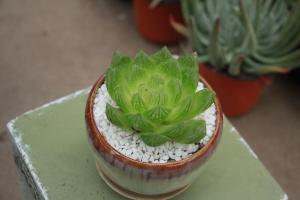How to Remove Green Water from My Planted Tank
Green water in a planted tank is caused by an overgrowth of algae. It can be unsightly and harmful to the health of your plants and fish. Removing green water involves a combination of controlling the underlying cause of the algae growth and implementing some simple solutions to clear up the water. Here are some effective methods to try.
1. Reduce Lighting
Algae thrive on light, so one of the easiest ways to combat green water is to reduce the amount of light in your tank. Consider leaving your aquarium lights on for just six to eight hours per day, rather than keeping them on for longer periods. You can also switch to a lower intensity bulb to provide less light to your tank. If natural light is contributing to the problem, consider covering your tank or rearranging it to reduce the amount of sunlight that enters the room.
2. Increase Water Movement
Green water algae requires nutrients, light, and still water to thrive. By increasing water movement, you can make it more difficult for the algae to take hold. Use a powerhead or additional filter to increase water flow in your tank. You can also remove dead plant matter and debris from the substrate to reduce the organic matter available for algae to feed on.
3. Introduce Algae-Eating Fish
Many species of fish, such as Siamese algae eaters, otocinclus, and mollies, eat algae as part of their natural diet. Adding one or more of these types of fish to your tank can help keep the algae population in check. However, be sure not to overstock your tank, as too many fish can create more waste and lead to further algae growth.
4. Use Chemical Treatments
In cases of severe green water algae, chemical treatments can be effective. However, these treatments should be used with caution, as they can harm your plants and fish if not used properly. Make sure to follow the manufacturer's instructions closely and remove any activated carbon from your filter before adding the treatment to your tank. You can also try using a UV sterilizer, which helps kill the algae by exposing it to ultraviolet light.
5. Perform Regular Tank Maintenance
Prevention is key when it comes to green water algae. By performing regular water changes and maintaining good water chemistry parameters, you can limit the conditions that allow algae to thrive. Be sure to test your water regularly and address any issues promptly. Additionally, consider cleaning your filter and substrate at least once a month to remove any buildup of debris or excess nutrients.
Removing green water from your planted tank can be a frustrating process, but by using a combination of these methods and maintaining good tank hygiene, you can get your water crystal clear in no time.

 how many times do yo...
how many times do yo... how many planted tre...
how many planted tre... how many pine trees ...
how many pine trees ... how many pecan trees...
how many pecan trees... how many plants comp...
how many plants comp... how many plants can ...
how many plants can ... how many plants and ...
how many plants and ... how many pepper plan...
how many pepper plan...






























